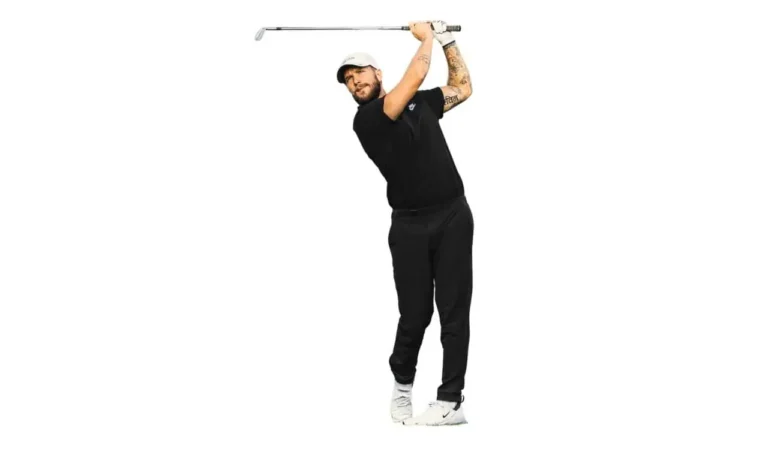Getting Better at Your Swing: Tips for New Golfers
-
Alex Wolff
- May 25, 2024
Golf is a sport that combines physical action, mental strategy, and being outside with a lot of fun. But if you’re new to the game, getting good at your swing might seem monumental. Don’t worry; every good player has been where you are now. We’ll review some essential tips that will help you build a robust and steady swing to help you do well on the course.

Finding Out the Basics
Why Grip Is Important
Your grip is the most essential part of your move. If you don’t grip the ball well, you could make mistakes like cuts and hooks or land the ball in different places. Many people use the “Vardon grip,” named after the famous golfer Harry Vardon, but other grip styles exist. To get good at this grip:
- If you are a right-handed player, hold the club in your left hand so it runs diagonally across your fingers.
- Put your thumb on the club and wrap your fingers around it.
- Put your right hand over your left hand so that the pinky finger on your right- hand rests between your left hand’s index and middle fingers.
Remember that you need to have a solid but relaxed grip. If you hold the club too tightly, it can make it hard to hit. Imagine that you are holding a tube of toothpaste and not being able to squeeze any out. This will help you check how firm your grip is.
4: Posture and Stance
Your stance and form are very important for a strong and balanced swing. Place your feet shoulder-width apart and bend your knees slightly at the start. Your weight should be spread out properly between your feet. Remember these things:
Line up your body to be straight with the goal line.
Bend from your hips to tilt your upper body. This helps you stay balanced and makes the swing more effortless.
Keep your back straight and your chin up so your shoulders can turn around during your swing.
The Steps of Swing
The golf swing has four main parts: the takeaway, the backswing, the downswing, and the follow-through. Let’s take a close look at each step.
Key Points
The first part of your swing sets the tone for the rest. To begin, slowly move the club back while keeping it close to the ground. When you take out, a common mistake is to only use your arms. Instead, use your shoulders and upper body to control and connect the move.
The backswing
Keep your lower body still as you continue the backswing and move your shoulders. Keep your left arm straight, but make it relaxed. At the top of the backswing, you want your left arm to be at a right angle to the club shaft. Stay within a reasonable distance because you could lose your balance and control.
The downswing
It is during the downswing that power is made. Move your weight to your left side and turn your hips toward the goal simultaneously. Your arms and hands should move with you quickly, letting the club fall into the “slot” for a solid and accurate hit.
Follow-Up
A good follow-through helps you keep your balance and control when you hit the ball. Your whole body should turn around so that your chest faces the target. You should put your weight on your left foot and lift your right foot off the ground. A steady follow-through demonstrates a well-done swing.
Mistakes people often make with swings and how to fix them
Even the best players make mistakes, but if you know the most common ones, you can avoid them.
Cutting the Ball Up
For right-handed players, a slice is a shot that curves sharply to the right. When you hit the ball, the clubface should not be closed. To make a slice work:
Check your grip to make sure it’s strong enough.
“Pay attention to an inside-to-outside swing path.”
Picture swinging the club in a circle that goes from inside the goal line to outside it.
When you hit the ball, square the clubface. Hit with alignment sticks to ensure your club’s face is straight.
How to Hook the Ball
A hook curves strongly to the left and is the opposite of a slice. Most of the time, it’s because the clubface is closed or the swing path goes from inside to outside. To put a hook in place:
Make your grip stronger if it’s too strong.
Make sure the swing path is neutral and follows the goal line.
When you hit the ball, keep the clubface square. Do drills that stress keeping the clubface square.
Getting the Ball
When you hit the ball with your top, it’s a low, weak shot that doesn’t go anywhere. If you lift your head or slouch while swinging, this can happen. To keep from topping:
Keep your posture straight during the swing. Pay attention to keeping your spine in the same position.
Wait to move your head and keep your eyes on the ball until it hits the ground.
Please don’t hit the ball, but swing through it. A smooth, steady move helps make sure there is good contact.
More practice makes better
Workouts to Make Your Swing Better
Specific drills can help you form good habits and fix problems with your swing. Try these:
The Drill with One hand
If you play golf with your right hand, practice striking with your left hand. This makes your lead hand stronger and more under control, which makes your swing easier. To keep the drill even, switch to your right hand.
The Towel Drill
Swing while holding a towel under your arms. Try not to let the towel fall. This drill helps you connect your swing by getting your arms and body to work together.
This is the Impact Bag Drill.
An impact bag can help you focus on how to hit the ball. Hit the bag with your club, making sure the face of the club is square and the strike is solid. At the point of contact, this drill helps you maintain good habits.
Why consistent practice is important
In golf, it’s essential to be consistent. Plan to work on your swing at the same time every week. Over time, even short, focused practice sessions can help you get better. Remember to work on all parts of your game, like hitting, iron play, chipping, and putting.
Mind Parts of the Game
Keeping a positive attitude
Golf can be challenging on the mind when you’re having trouble with your swing. Keeping a positive mood is very important. Instead of dwelling on mistakes, focus on small wins and small steps toward growth.
Seeing yourself succeed
In golf, picturing what you want to do is very helpful. Think about where you want the ball to land and how it will move before each shot. You can swing with more ease and accuracy if you practice it in your mind.
How to Handle Stress
In golf, you often have to play under pressure, whether it’s an event or a friendly match. Learn ways to deal with Stress, like taking deep breaths, focusing on the process instead of the result, and sticking to a schedule.
How to Learn from the Experts
You can learn much about improving your swing by watching skilled golfers. Watch out for their methods, habits, and ways of thinking. Many pros post drills and tips in educational videos, which can be very helpful for people just starting out.
Personal Story: How I Learned from My Golf Hero
I had trouble keeping my swing the same when I started playing golf. I saw a movie of Rory McIlroy breaking down how he swings the club one day. I noticed that he kept the pace smooth and even followed through. His method impressed me, so I tried to copy it and noticed that my swing got better. Seeing the pros play can give you that “aha!” moment that changes your play.
Getting Help from a Professional
How to Find a Golf Teacher
If you want to improve your swing, consider hiring a skilled golf teacher. A good teacher can give you feedback specific to your needs and help you make a practice plan that fits those needs.
Pros of Video Analysis
There are a lot of golf teachers who use video analysis to break down your swing frame by frame. You can see exactly what you’re doing right and wrong with this technology, which makes it easier to make changes.
Tools Are Important
How to Pick the Right Clubs
Your swing will be much better if you have the right gear. To start, you don’t need the most expensive clubs. Instead, pick clubs with the right size and speed for your swing. There are a lot of golf places that will help you find the correct set of clubs by fitting them.
How to Keep Your Clubs in Good Shape
Clean your clubs often and look for damage or signs of wear. Clubs that are well taken care of work better and last longer.
Using Tools for Training
You can improve your swing with a lot of different training tools. These tools, like alignment sticks and weighted clubs, can give you helpful information and help you form good habits.
Going to the Course to Play
You need to know how to handle the course to lower your scores. It would help if you planned your shots based on your skills and how the game is set up. Only take dangerous shots if you have to.
A Personal Story: My First Round
I still remember the first time I played golf. I was trying so hard to hit the ball as far as possible that I got into many problems, like bunkers, rough terrain, and even a water hazard. My scores needed to improve before I started to think carefully, pick safer shots, and play to my strengths.
Getting Rid of Different Lies
Golf has different lies, such as fairways, rough sand, and even tricky hills. Hit from other positions to boost your confidence and make your swing more flexible.
How to Stay Fit for Golf
Why fitness is important
Being physically fit is a big part of playing golf. A strong core, flexible muscles, and much endurance can help you spin better and stay healthy.
Exercises that are good for golf
Add movements that are specific to golf to your workout routine. Work on your core strength, flexibility, and ability to rotate. You can also get more robust and flexible by doing yoga and Pilates.
Having Fun With the Game
Finding a Golf Neighborhood
Joining a golf group can make the game fun and allow you to learn and improve. Find clubs in your area.
